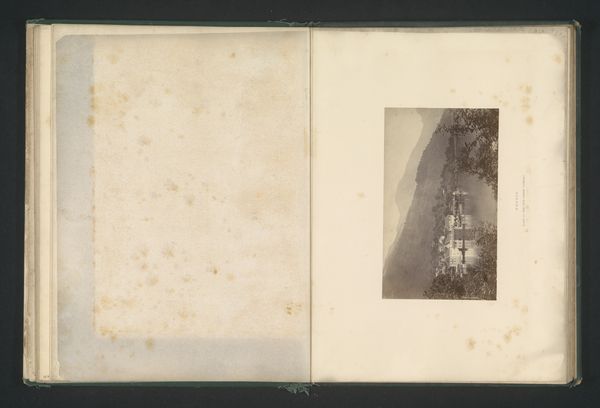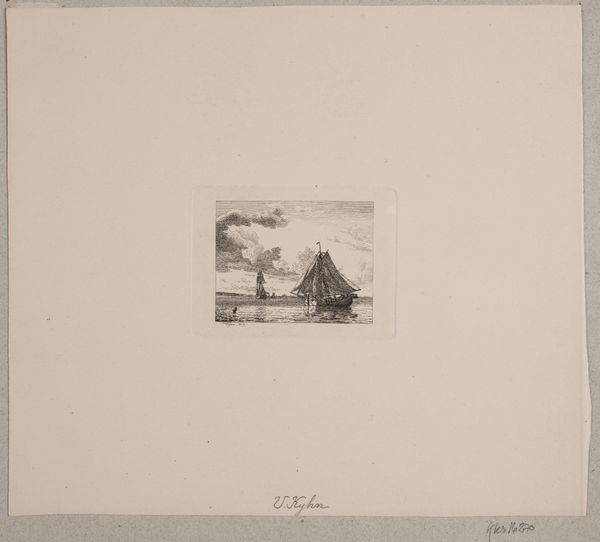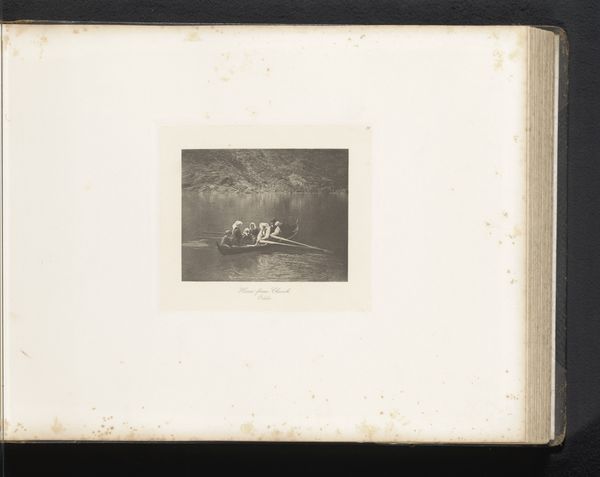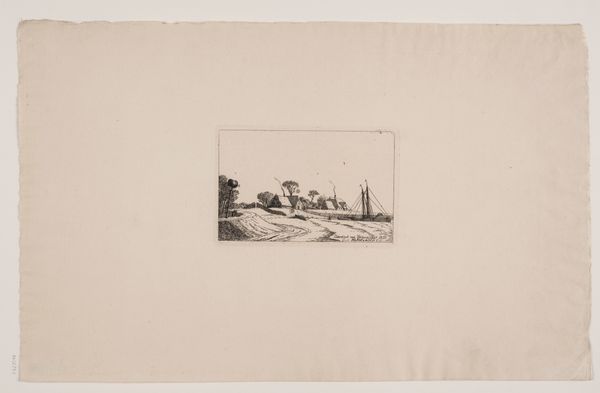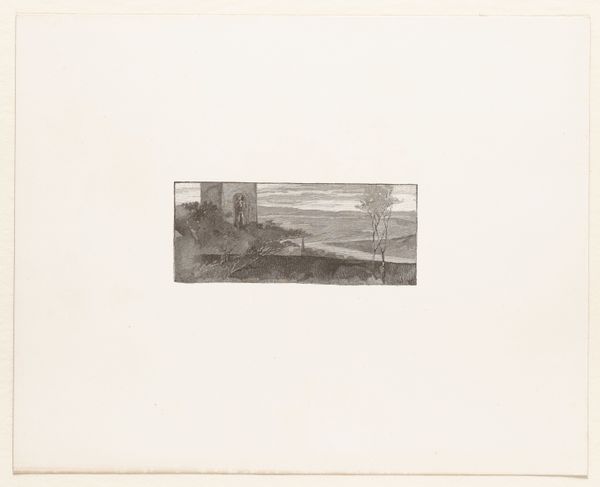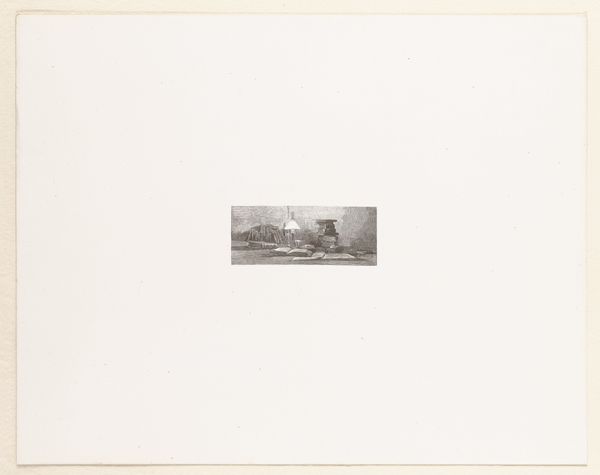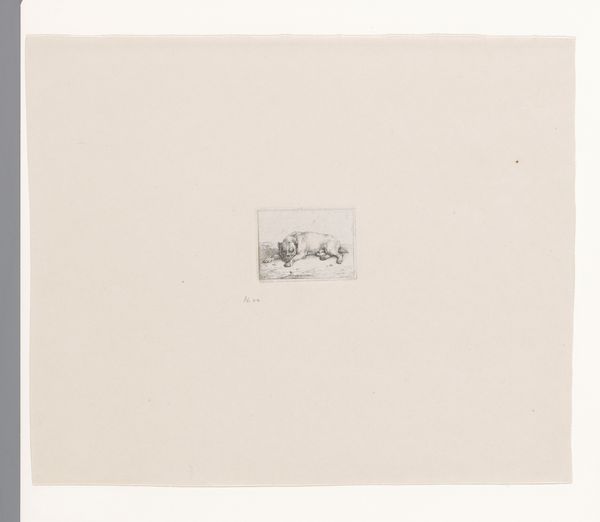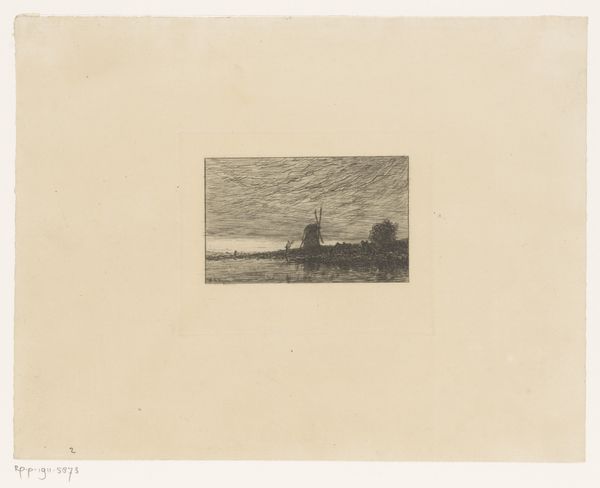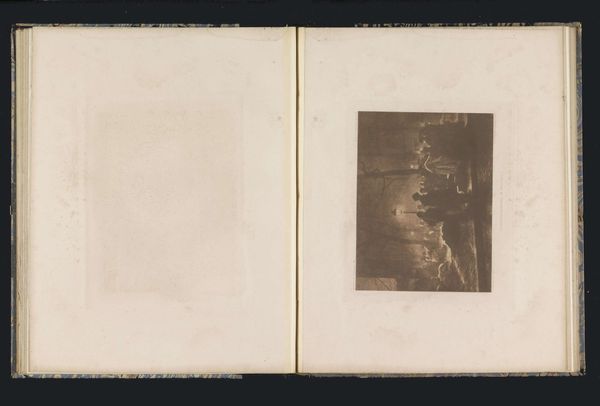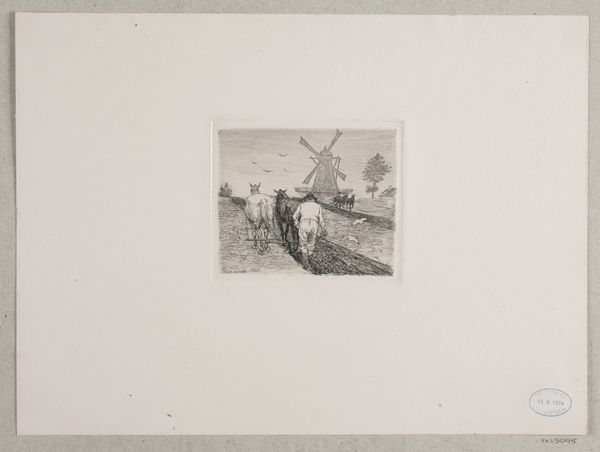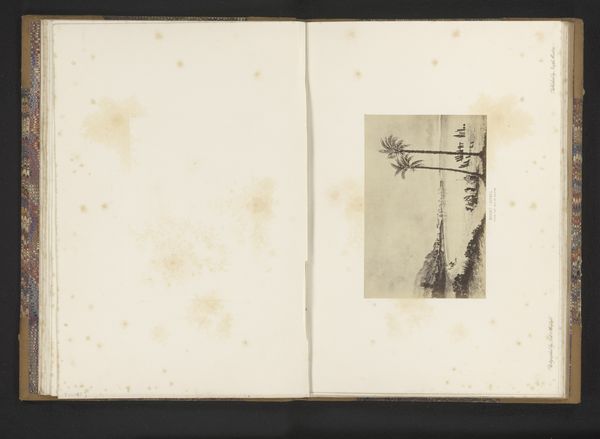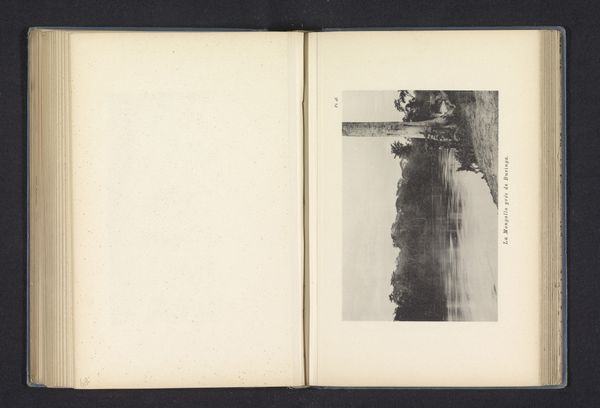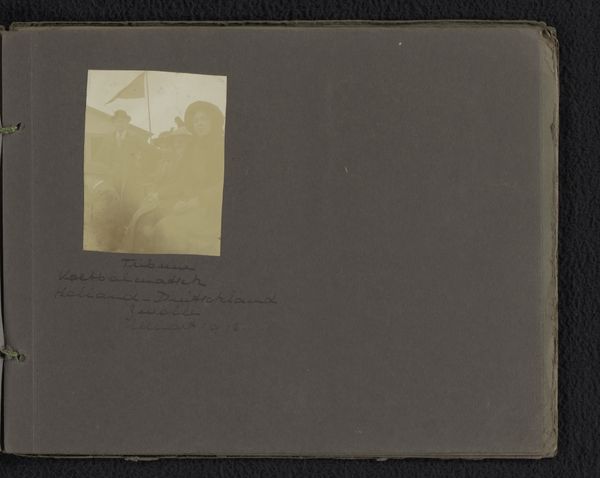
print, etching
# print
#
etching
#
landscape
Dimensions: 85 mm (height) x 125 mm (width) (plademaal)
Curator: This etching from 1869, titled "Kongekilde mölle" by Carl Thomsen, really captures a sense of isolation. What's your immediate response to it? Editor: Stark. Utterly stark. The monochromatic palette and the solitary structure set against that pale sky evoke a sense of profound loneliness and the hard lives of the peasantry who depended on these mills. Curator: Yes, that isolation is powerful, and it draws attention to the labor inherent in such rural landscapes. Consider the material constraints: an etching produced through careful labor-intensive processes, replicating an existing reality bound to agrarian labor and conditions of production in late 19th century Denmark. It's all connected, from the hand that crafted the plate to the miller reliant on the wind. Editor: Absolutely. It reminds us of the relentless cycle of labor intertwined with technological developments like windmills which impacted so much in the 19th century. But who benefited, right? Who owns the means? Also, where does this mill exist within narratives of class and societal structures of the time? Was this mill owned locally, did it sustain the immediate community or contribute to regional or national economies? This imagery cannot be extracted from larger intersectional perspectives rooted in history and theory. Curator: Precisely! The etching medium itself further democratized image production. Consider, for example, the accessibility versus an original painting: its means of distribution become equally significant, mirroring social mobility dynamics inherent to a culture’s exchange economy within art production and dissemination frameworks that echo industrial production itself. Editor: Good points. And given its location, does it allude to the tension between industrial growth and the slower, more grounded agricultural life that shaped so much of society? What was the status of people from varied racial and economic identities that found their life work centered around places like the Kongekilde mölle? Those whose existence literally depended upon the yield, labor conditions, and environmental changes surrounding such place-based production. Curator: Such questions underline our interconnectedness as social beings even as nature is seemingly isolated, like that tree next to the mill which makes its own quiet comment within a broader societal condition of making a life from material limits of resource. Editor: The bleakness captures more than the landscape; it encapsulates a moment rife with social stratification, technological transformations and rural populations often pushed aside in official historical accounts. It stands for that history so succinctly. Curator: Right—etching a place is also etching into socio-economic layers, labor, distribution of means, material possibilities. A layered approach towards a "simple landscape", when one actually considers the contextual frameworks, unravels complexity! Editor: Agreed. Understanding historical structures around art lets us really ‘see’ so much more than is directly depicted, prompting insights of an era into view.
Comments
No comments
Be the first to comment and join the conversation on the ultimate creative platform.
